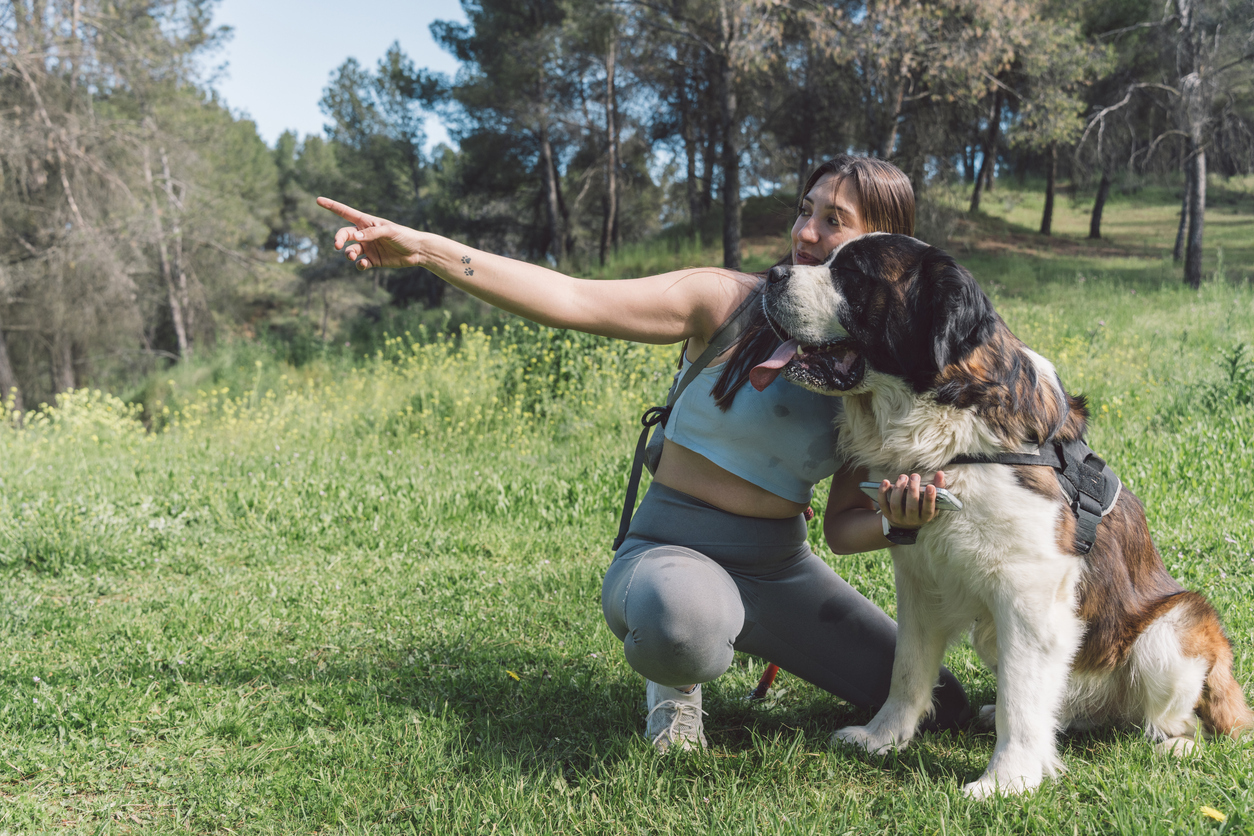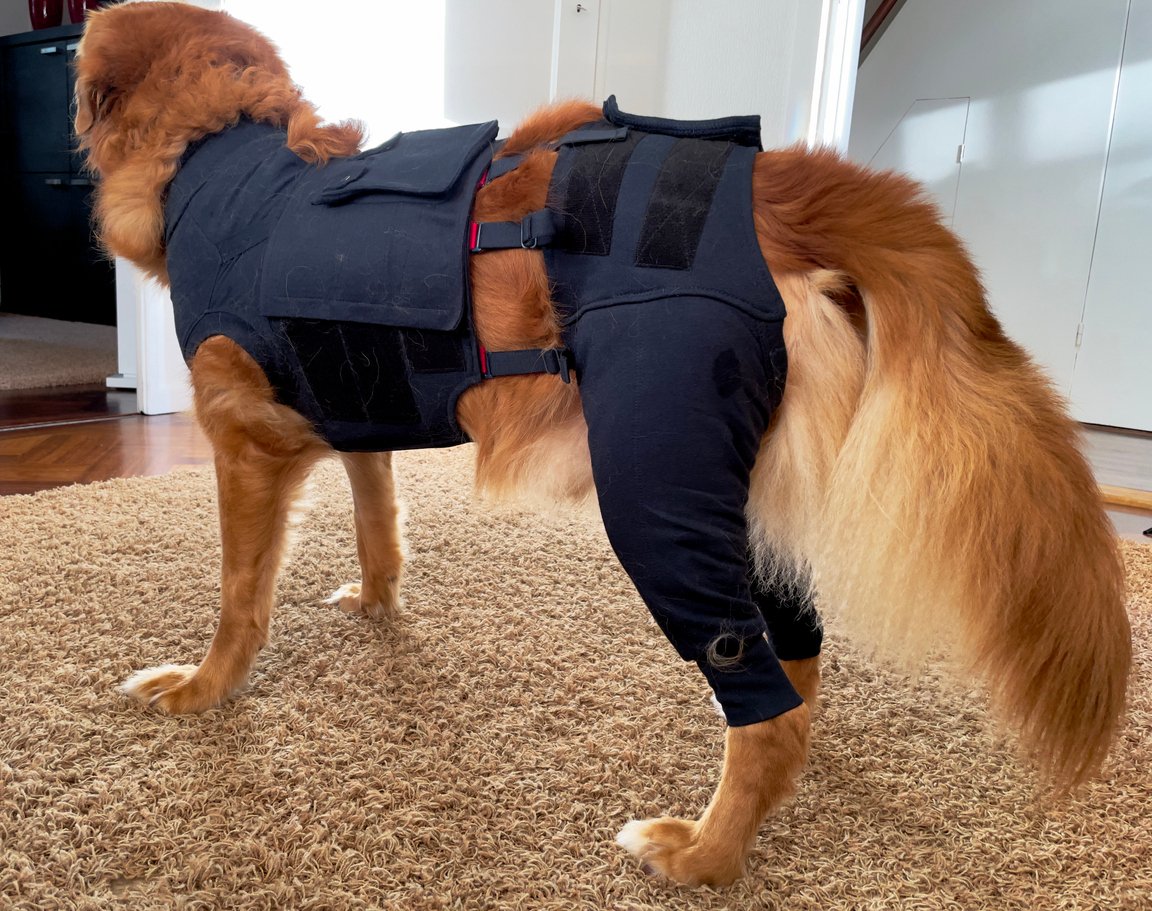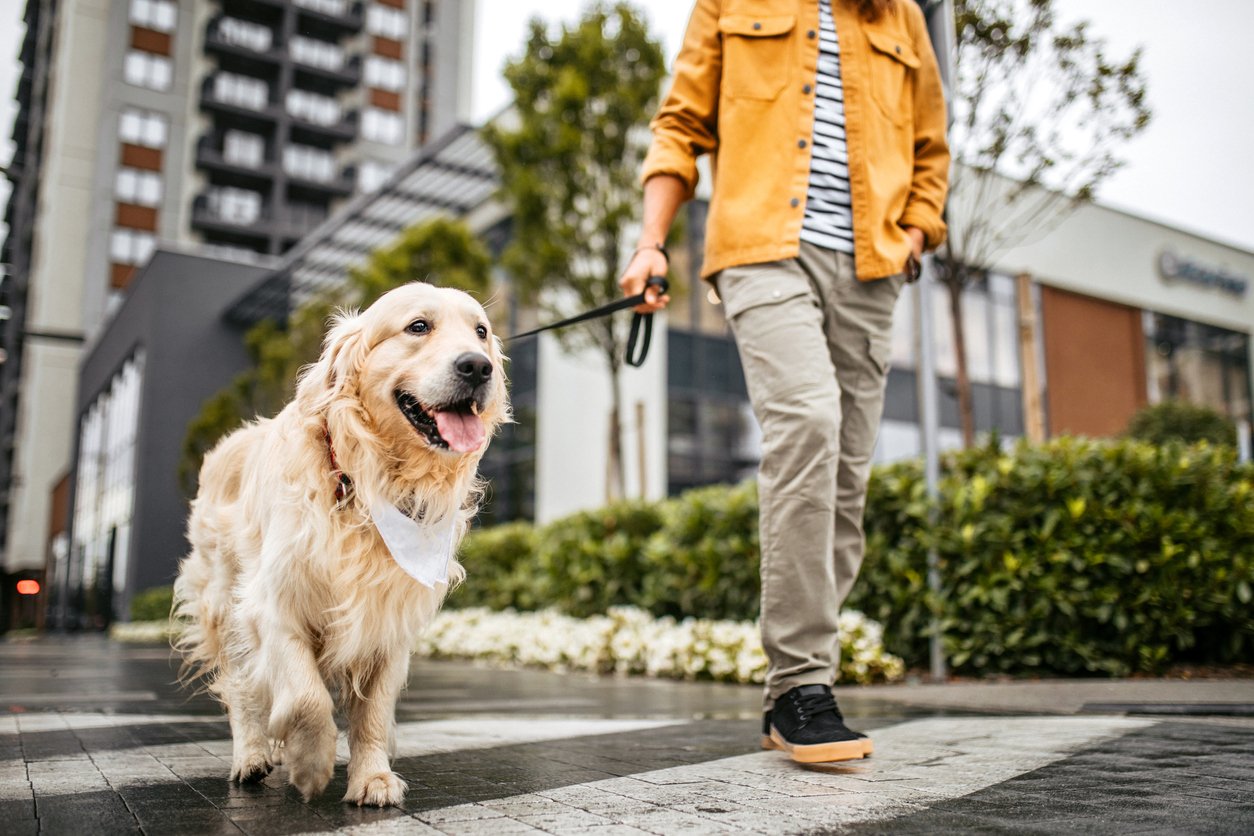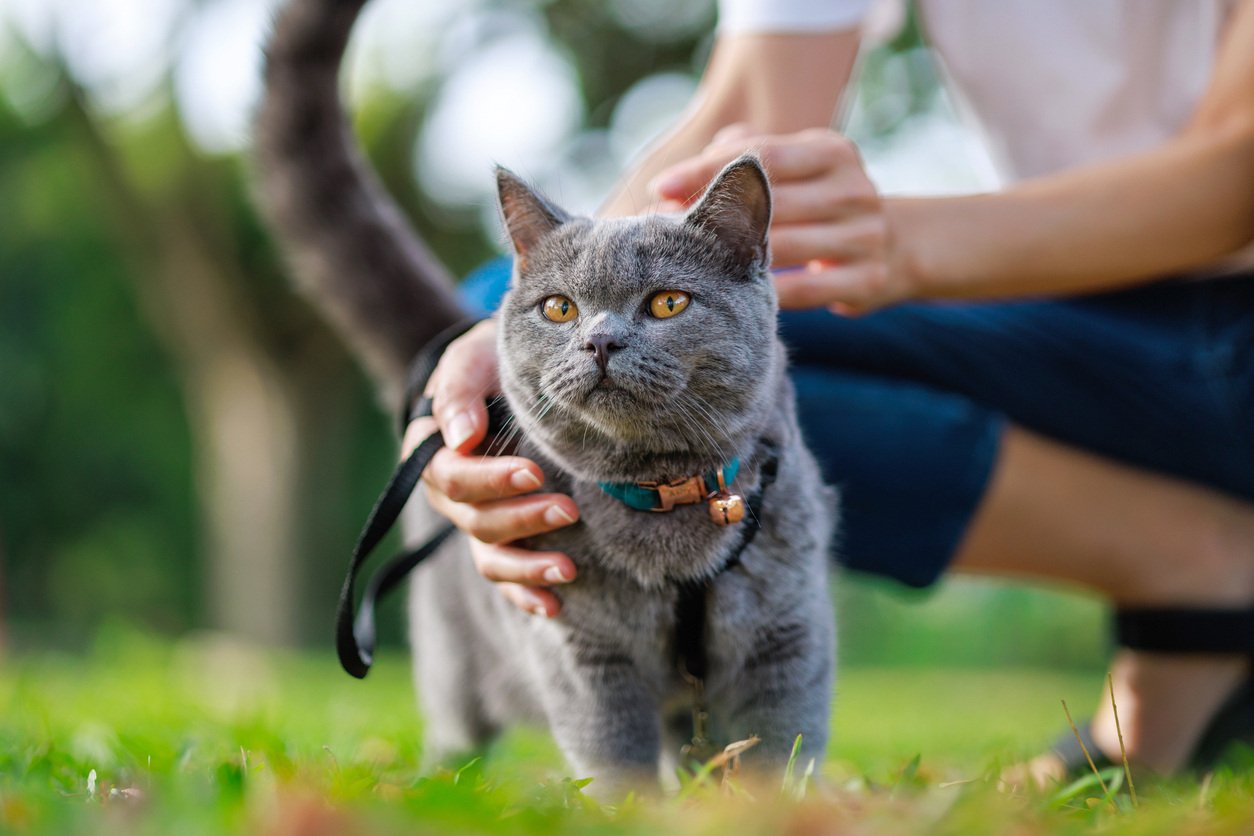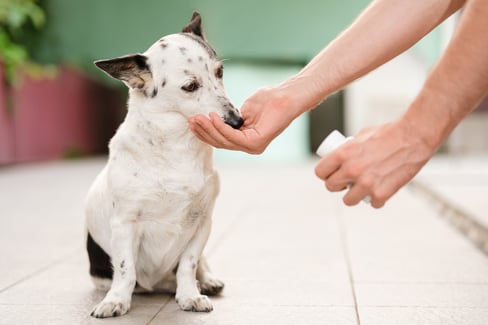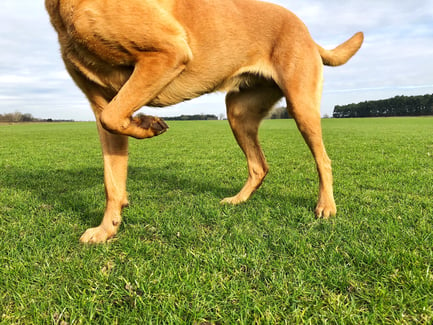Table of Contents
Finding the perfect harness for your dog is a journey worth taking, and it’s not just about comfort or control—it’s about building a safer, more enjoyable bond during walks, training, and social outings. Whether your dog is a tiny, curious pup or a strong, energetic adventurer, the right harness can make all the difference. This guide dives into everything you need to know about choosing, using, and maintaining a dog harness, so you and your furry friend can hit the ground running with confidence.
Understanding Dog Harnesses
Dog harnesses are an essential accessory for your dog’s health, offering a secure and comfortable way to manage dogs during walks, training, or other activities. Unlike traditional collars, harnesses distribute pressure across a dog’s body, reducing strain on their neck and providing better control. Whether you’re a new dog owner or looking to switch from a collar to a harness, understanding the different options can help you make the best choice for your furry friend.
Types of Dog Harnesses
There are several types of dog harnesses, each designed for specific purposes and dog behaviours:
- Step-in Harnesses: These harnesses are user-friendly, requiring the dog to "step into" the harness with their front legs. The design ensures even pressure distribution and is especially helpful for dogs that are uncomfortable with having a harness placed over their head. Adjusting and securing the straps on the back provides a snug, secure fit without causing irritation.
- Front-Clip Harnesses: With a leash attachment located on the chest, front-clip harnesses are ideal for training and behaviour correction. They help redirect pulling behaviour by turning the dog’s body toward you when they pull, encouraging better leash manners. These are particularly useful for dogs that are strong pullers or easily distracted during walks.
- Back-Clip Harnesses: Back-clip harnesses are the most common and straightforward option, with the leash attachment on the back. They’re comfortable for the dog and easy for the owner to use, making them a great choice for dogs that are already leash-trained and don’t pull excessively. However, they may encourage pulling in some dogs, as the pressure doesn’t redirect their movement.
- No-Pull Harnesses: Designed specifically to address pulling issues, no-pull harnesses often feature dual attachment points (front and back) or gentle compression mechanisms that discourage pulling. They’re an excellent choice for training purposes but must be properly adjusted to avoid discomfort or restricted movement.
Harness vs. Collar
Choosing between a harness and a collar depends on your dog’s needs, behaviour, and health considerations. Each option has its benefits and drawbacks:
|
Feature |
Harness |
Collar |
|
Benefits |
|
|
|
Drawbacks |
|
|
Potential Injuries from Collars
While collars are a common choice for dogs, improper use or fit can lead to injuries or health issues. Understanding these risks is important to ensure your dog’s safety:
- Neck Strain and Injuries: Excessive pulling or jerking on a leash can strain a dog’s neck muscles and lead to cervical injuries. This is especially concerning for dogs prone to pulling or those with small, delicate necks.
- Tracheal Damage: Pressure on the trachea (windpipe) from a tight or improperly fitted collar can cause tracheal collapse or breathing difficulties. This risk is heightened in small breeds and brachycephalic dogs, such as Pugs or Bulldogs.
- Spinal Cord Issues: Repeated strain from pulling on a collar can potentially affect the spinal cord and vertebrae, leading to long-term mobility issues or pain.
- Skin Irritation and Hair Loss: Tight collars or collars made of rough materials can cause chafing, irritation, or hair loss around the neck. Prolonged use of dirty or wet collars can exacerbate these issues.
- Eye Pressure in Certain Breeds: Pulling on a collar can increase intraocular pressure, especially in breeds prone to eye conditions, such as Shih Tzus or Pekingese. This can worsen preexisting eye problems.
- behavioural Issues: Dogs that experience discomfort or pain from a collar may develop negative associations with walking or leashes, leading to fear or aggression when handled.
Risks from Ill-Fitting Dog Harnesses
While harnesses are generally safer than collars, an ill-fitting harness can also pose risks to your dog’s safety and well-being. It’s important to ensure the harness fits correctly to prevent the following issues:
- Chafing and Skin Irritation: A harness that is too tight or made from rough materials can rub against your dog’s skin, leading to irritation, chafing, or even open sores. This is especially common in high-friction areas like the underarms or chest.
- Restricted Movement: A harness that is too tight or poorly designed can restrict your dog’s natural movement, making it uncomfortable for them to walk, run, or play. Over time, this can lead to muscle strain or altered gait.
- Escapes and Safety Risks: A loose harness increases the risk of your dog slipping out, especially during walks or in busy areas. Escaping from a harness can put your dog in danger of traffic accidents or getting lost.
- Pressure Points: A poorly adjusted harness can create pressure points on sensitive areas, such as the shoulders or ribs, leading to discomfort or potential bruising. This is particularly concerning for dogs with thin coats or sensitive skin.
- behavioural Problems: Discomfort caused by an ill-fitting harness may lead to negative associations with wearing it. Dogs might resist putting on the harness, become anxious during walks, or develop behavioural issues related to discomfort.
- Increased Risk of Injury: If a harness places uneven pressure on certain parts of the body, such as the neck or chest, it can negate the benefits of using a harness and lead to injuries similar to those caused by collars.
To avoid these risks, always measure your dog carefully before purchasing a harness. Follow the manufacturer’s sizing guidelines and adjust the harness so it fits snugly but comfortably. Regularly check the fit, especially if your dog is growing or their weight changes, to ensure ongoing comfort and safety.
Choosing the Right Harness for Your Dog
Selecting the right harness is vital for ensuring your dog’s comfort, safety, and enjoyment. Factors such as size, material, and specialized needs all play a role in making the best choice for your pet.
Size and Fit
A properly fitting harness is essential for your dog’s safety and comfort. Dogs come in various shapes and sizes, and harnesses should be tailored to their specific dimensions. Small breeds require lightweight harnesses that don’t add unnecessary bulk, while large breeds benefit from sturdy options that can handle their strength and energy.
|
Consideration |
Dog Harness for Large Breeds |
Dog Harness for Small Breeds |
|
Harness Strength |
Requires reinforced materials to withstand pulling and strength. |
Lightweight materials to prevent discomfort. |
|
Fit Adjustments |
Must accommodate broad chests and muscular builds. |
Needs precise adjustments to avoid slipping out. |
|
Control Features |
Sturdy handles and dual-clip designs for better control. |
Minimalist designs that are easy to secure. |
|
Material |
Durable, heavy-duty materials like nylon or leather. |
Soft, breathable materials such as mesh or fabric. |
|
Padding |
Extra padding to prevent pressure on joints during pulling. |
Light padding to prevent irritation on delicate skin. |
|
Special Features |
Reflective strips for visibility and safety in low-light conditions. |
Simple designs with safety straps for added security. |
To ensure a secure fit, start by measuring your dog’s girth—the widest part of their chest, just behind their front legs. Many harnesses provide sizing charts to match your measurements. When fitted, the harness should be snug but not tight, allowing you to slide two fingers comfortably between the straps and your dog’s body.
Material and Durability
The material of the harness should align with your dog’s lifestyle and activity level. Active dogs or those who enjoy outdoor adventures benefit from durable materials like reinforced nylon or waterproof fabrics. Puppies may require softer, more adjustable harnesses to accommodate growth and prevent irritation. Senior dogs often prefer lightweight materials that minimize pressure and enhance comfort.
Leather harnesses offer durability and style but require more maintenance to stay supple and intact. Mesh or padded options are ideal for providing extra comfort during extended wear, particularly for sensitive or smaller breeds.
Specialized Harnesses
Specialized harnesses cater to the unique needs of different dogs. Puppies may need harnesses with extra padding and adjustability to grow alongside them, and small breeds often benefit from step-in designs that are easy to secure and lightweight.
For large breeds, harnesses with sturdy handles and dual-clip attachments provide better control and versatility. Dogs with medical conditions, such as mobility issues, can benefit from harnesses equipped with lifting support or ergonomic designs that reduce strain on joints. Reflective harnesses are a great choice for nighttime walks, enhancing visibility and safety in low-light conditions.
By carefully considering size, material, and any specialized needs, you can select a harness that not only keeps your dog safe but also enhances their comfort and confidence during walks and activities.
How a Dog Harness Can Help with Joint Issues
A well-designed dog harness can provide significant benefits for dogs suffering from joint problems, such as arthritis, hip dysplasia, or other mobility issues. Unlike collars, which can concentrate pressure on the neck, a harness evenly distributes weight across the body, reducing strain on specific areas. This can help alleviate discomfort and prevent further stress on joints.
Harnesses with ergonomic designs, such as padded chest plates or lifting handles, offer additional support for dogs with limited mobility. Lifting harnesses are especially beneficial for senior dogs or those recovering from surgery, as they allow owners to assist with standing, climbing stairs, or navigating uneven terrain without putting additional strain on the dog’s joints.
A properly fitted dog harness encourages better posture and natural movement, reducing the risk of compensatory strain on other parts of the body. For active dogs with joint issues, lightweight and padded harnesses minimize friction and provide comfort during walks, helping them stay active while protecting their joints.
By choosing a dog harness that is tailored to your dog’s specific needs, you can improve their quality of life and ensure they remain comfortable and mobile, even in the face of joint challenges. Another important way to support your dog’s joint health is by incorporating joint supplements into their diet. TRI-ACTA contains 100% natural ingredients, including two types of glucosamine (HCl for fast absorption, sulfate for cartilage repair and regeneration), chondroitin (works in tandem with glucosamine to strengthen cartilage), and Methylsulfonylmethane (MSM, a natural anti-inflammatory to reduce swelling and help with pain-free movement). The extra-strength version, TRI-ACTA H.A., adds hyaluronic acid, which further lubricates the joints allowing for easier movement. The latter is recommended for dogs with severe joint issues.
TRI-ACTA H.A. for Pets
Our maximum strength formula is optimally designed to accelerate the formation of cartilage, minimize inflammation, expedite the healing process, and improve joint conditions.
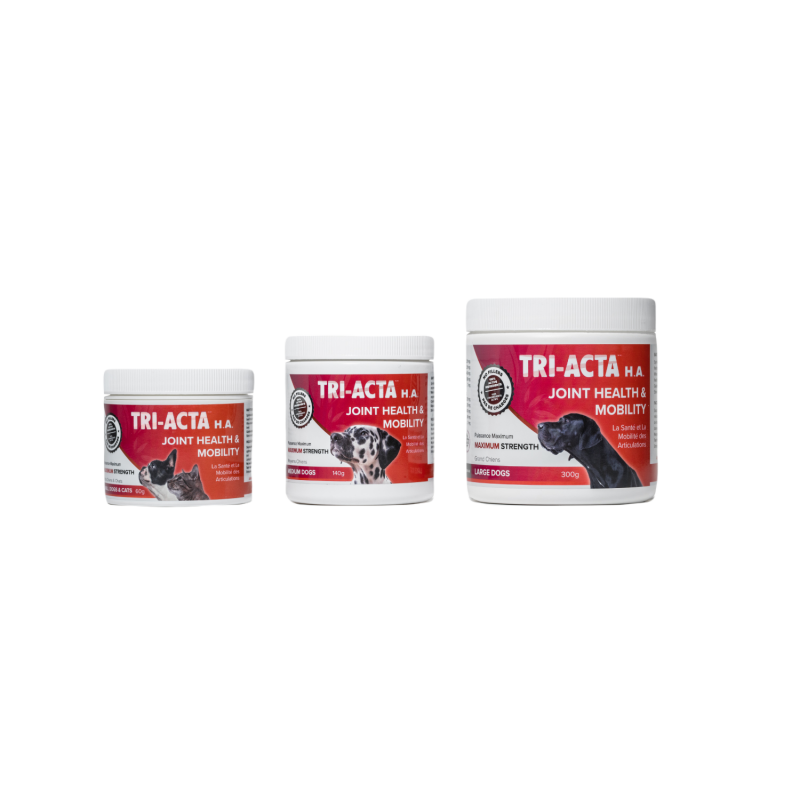
Training with a Harness
Harness training is essential to ensure your dog’s comfort and also your control during walks. Below are detailed steps and techniques to help you get started:
Getting Your Dog Used to a Harness
Introducing your dog to a harness requires patience and positive reinforcement. Here’s a step-by-step guide:
- Familiarization: Begin by letting your dog sniff and inspect the harness. Lay it on the ground or hold it in front of them, offering treats to create positive associations.
- Gradual Introduction: Place the harness gently on your dog without fastening it. Let them wear it for short periods indoors to get accustomed to the sensation.
- Fasten and Adjust: Once your dog appears comfortable, secure the harness and adjust it to ensure a snug fit. Check that it’s neither too tight nor too loose, with enough space to fit two fingers between the harness and your dog’s body.
- Practice Indoors: Attach a leash and practice walking in a controlled environment. Reward your dog for staying calm and responsive.
- Take it Outside: Gradually introduce outdoor walks with the harness, continuing to reward positive behaviour and stopping to correct pulling or resistance.
- Keep Training Sessions Short: Short sessions prevent your dog from becoming overwhelmed. Ten to fifteen minutes at a time is sufficient for building confidence and familiarity with the harness.
- Patience and Persistence: Be patient as your dog adapts to the harness. Not all dogs adjust at the same pace, so consistent practice and positive reinforcement are key. Celebrate small victories to encourage progress.
Harness Training Techniques
- Loose-Leash Walking: Use a treat or favorite toy to encourage your dog to stay by your side while walking. Reward them for maintaining a loose leash and staying focused.
- Redirecting Pulling: If your dog begins to pull, stop walking immediately and wait for the leash to slacken. Once they stop pulling, resume walking. This teaches them that pulling will not get them where they want to go.
- Positive Reinforcement: Always use praise, treats, or toys to reward good behaviour. This builds trust and helps your dog associate the harness and leash with positive experiences.
Common Mistakes to Avoid
Avoid these pitfalls to ensure successful dog harness training:
- Over-Tightening: A harness that’s too tight can cause discomfort and restrict movement. Always check the fit and adjust as needed.
- Improper Fit: An ill-fitting harness can cause chafing or allow your dog to slip out. Measure your dog carefully and refer to sizing guides when purchasing.
- Skipping Acclimation: Rushing the process can lead to resistance or anxiety. Take the time to acclimate your dog gradually, ensuring they feel safe and comfortable.
- Neglecting Maintenance: Regularly inspect the harness for wear and tear. Replace it if you notice any fraying or broken parts that could compromise safety.
Care and Maintenance of Dog Harnesses
Keeping your dog’s harness in excellent condition is crucial for their safety and comfort. Regular care ensures longevity, maintains functionality, and reduces the risk of discomfort or injury.
Cleaning the Harness
Each type of harness material requires specific care to maintain its durability and hygiene. Proper cleaning ensures the harness remains comfortable and safe for your dog:
- Nylon Harnesses: These are generally easy to clean and can be machine-washed. Use a gentle cycle with cold water and a mild detergent. Avoid using bleach or fabric softeners as these can degrade the material. Allow the harness to air dry completely before use to prevent odors and mildew.
- Leather Harnesses: Carefully clean leather harnesses with a damp cloth to remove dirt and debris. After cleaning, apply a leather conditioner to maintain the material’s suppleness and prevent cracks. Avoid prolonged exposure to water or sunlight, as these can weaken the leather.
- Mesh or Fabric Harnesses: Hand wash these types of harnesses using mild soap and lukewarm water. Rinse thoroughly to ensure no soap residue remains, which could irritate your dog’s skin. Let the harness air dry in a shaded area.
Regular cleaning not only keeps the harness fresh but also eliminates bacteria and odors, enhancing your dog’s overall comfort.
Inspecting for Wear and Tear
Routine inspections of your dog’s harness are vital to ensure safety during use. Look for the following signs of wear:
- Frayed Straps: Check all straps for signs of fraying or weakening, as damaged straps can easily break under tension.
- Loose Stitching: Inspect seams for unraveling or loose threads that may compromise the harness’s integrity.
- Damaged Hardware: Examine buckles, D-rings, and other attachments for cracks, rust, or bending. Faulty hardware can fail unexpectedly, posing a risk to your dog’s safety.
Addressing these issues promptly by repairing or replacing the harness ensures consistent performance and safety.
When to Replace a Harness
Despite proper maintenance, all harnesses have a limited lifespan. Replace your dog’s harness if you notice:
- Severe Damage: Fraying, broken buckles, or stretched straps that cannot be repaired.
- Poor Fit: Changes in your dog’s size or weight that render the harness too loose or too tight.
- Frequent Escapes: If your dog repeatedly slips out despite adjustments, the harness may no longer provide adequate security.
- Loss of Functionality: Stiff, brittle, or degraded materials that reduce comfort or durability.
Investing in a new harness when needed ensures that your dog continues to enjoy safe, comfortable outings and training sessions.
Harness Use and Socialization
Harnesses can significantly improve your dog’s behaviour and safety in various social settings, whether at a dog park, group activity, or busy public space. The proper use of a harness can create positive interactions and reduce risks for your dog and those around them.
1. Harnesses in Social Settings
In social environments, a dog harness gives you better control over your dog’s actions, ensuring they are safe and well-behaved. For instance, in a dog park, the harness allows you to intervene if your dog becomes overly excited or their play escalates into aggression on another dog or human. The handles available on some harness designs enable quick and secure redirection, which is especially valuable for large, strong dogs.
During group activities like hikes or training sessions, a harness helps evenly distribute the pulling force, sparing your dog’s neck and making it more comfortable for you to manage them. This ensures a pleasant and safe experience for both dog and owner in shared environments.
2. Building Confidence with a Harness
A harness can be an invaluable tool in helping shy or anxious dogs feel more secure in new or stressful situations. The gentle, firm fit of a harness can offer a calming effect, providing a sense of security as it gently wraps around their body. This comfort is especially important for dogs that might feel overwhelmed by new people, dogs, or settings.
Gradually introducing your dog to social settings while using a harness can build their confidence. The harness gives you the control needed to guide them away from situations that might frighten them, creating opportunities for positive reinforcement when they respond calmly. Over time, your dog will associate these environments with safety and pleasant experiences.
3. Safety in Public Spaces
Public spaces can present many challenges for dog owners, from heavy traffic to interactions with strangers or other animals. A well-fitted harness reduces the risk of accidents by preventing your dog from escaping or pulling out unexpectedly. Many harnesses also include reflective strips or bright colors, enhancing your dog’s visibility in low-light conditions, which adds another layer of safety.
Additionally, a harness offers better control during unexpected interactions, such as encounters with off-leash dogs or overly enthusiastic people. You can easily redirect your dog and avoid confrontations, ensuring a safer experience for everyone involved.
By incorporating a harness into your dog’s routine, you enhance their safety, build their confidence, and create opportunities for positive interactions in various social and public settings.
Conclusion
Choosing the right harness isn’t just about avoiding discomfort or injuries—it’s about setting the stage for positive, enjoyable experiences for both you and your dog. A well-chosen, properly fitted harness enhances safety, provides better control, and ensures your dog is comfortable during walks and activities. With a little patience, practice, and care, you’ll not only find the perfect harness but also strengthen your bond with your furry companion. So take your time, explore the options, and enjoy the journey of discovering what works best for your dog’s unique needs.
Supporting your dog’s physical health is important, and joint supplements are a big part of that. TRI-ACTA contains 100% natural, active ingredients, making it a great choice for your dog.
Purchase TRI-ACTA online or learn where to buy at a store near you.
TRI-ACTA for Pets
A proactive approach for developing and younger adult pets to maintain optimal joint health mobility, minimize inflammation and fend off age-related ailments.

Newsletter Signup
Subscribe to our newsletter to receive the latest news and exclusive offers.
.jpg?height=2000&name=Cliick_Integricare-DISPLAY-REVISEDV2%20(1).jpg)
Proactive & Therapeutic Joint Supplements
When given daily, Integricare joint supplements recover bone and joint injuries faster and help prevent mobility injuries from happening in the first place.

